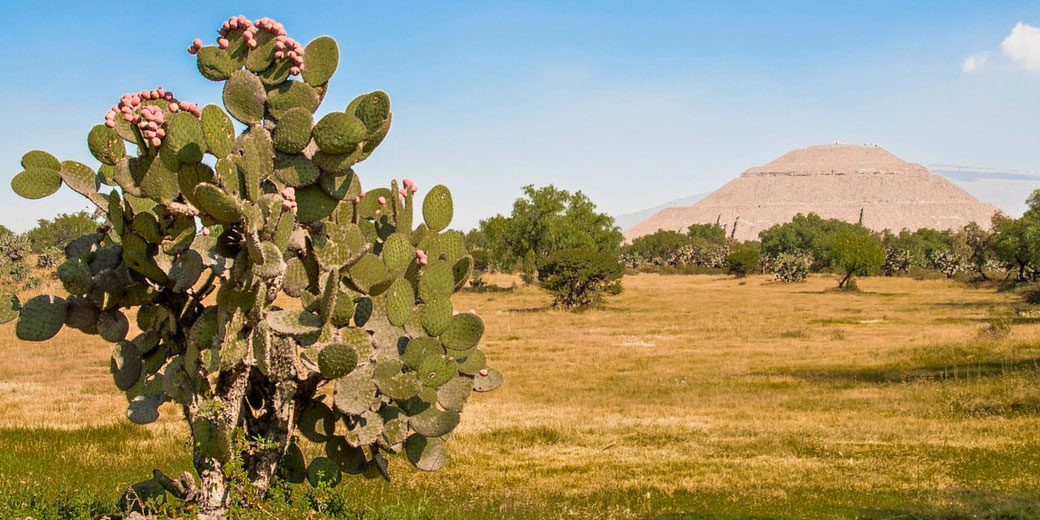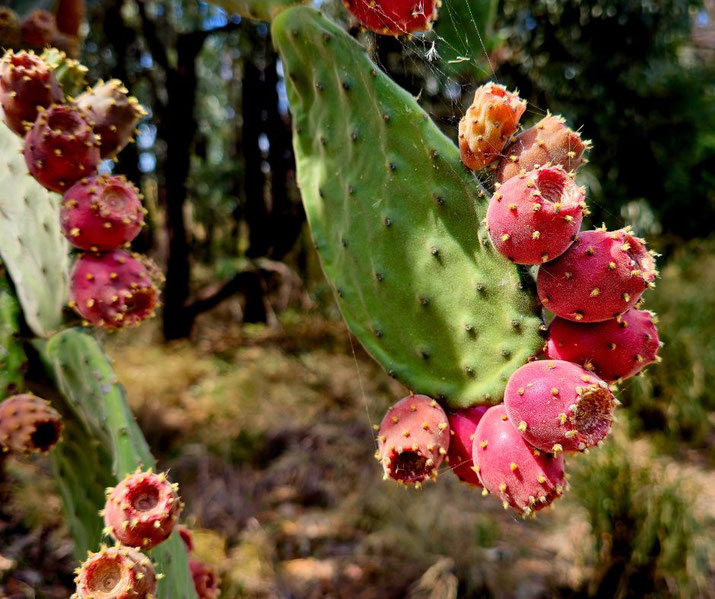The incredible rise of the Aztec Empire

The Aztec Empire is one of the most well-known Mesoamerican cultures. It existed between c. AD 1325 and 1521 and controlled a significant portion of the central and southern regions of modern-day Mexico.
While we often refer to them as the 'Aztec', this is not the name they used for themselves. Instead, they were known as the 'Mexica'.
The influence of the Aztec stretched from the Pacific Ocean in the west to the Gulf of Mexico in the east.
The Aztec Empire used a mix of military conquest and diplomatic alliances to maintain control over this vast region.
Where did the Aztec come from?
The Aztec people were just one of several tribes that spoke the Nahuatl language that were migrating south from the area of modern North America and into northern Mexico.
All of these migrating tribes claimed to have come from a mythical land to the northwest called Chicomoztoc (meaning 'place of the Seven Caves') or Aztlan (which probably meant 'Place of the White Heron').
However, the exact location of these lands is debated among historians, and their existence as a specific historical place is uncertain.
Around AD 1100, the ancestors of the Aztec began their move south to find a new homeland.
Over successive generations, the Aztec were repelled by the regions they entered until 1325, when they reached Lake Texcoco.
Legend states that the tribe saw an eagle perched on a cactus on an island in the lake, eating a snake.
The Aztec took this as a sign and founded their capital city, Tenochtitlan, on the lake.
As a result, the Aztec had to become clever engineers, as they needed to develop the necessary technology to build a city on the shores of a lake.
First, they built canals and water gates to control the water level of the lake.
In addition, they also constructed three raised roads, called causeways, which could link the islands to the shore in order to improve transportation.
However, since Tenochtitlan was surrounded by water, canoes and boats continued to be the primary means of transport.

While building a city on a marshy lake was a challenging task, it did have some natural advantages.
For example, the lake provided easy access to clean drinking water and would provide water for agriculture.
Also, there was a naturally occurring prickly pear cactus, which grew a fruit (nochtli) that was full of nutrients.
The lake provided access to lots of fish, birds, and a blue-green algae, called tecuitlatl by the Aztecs that, when dried, could be eaten with tortillas or as a sauce which providing a source of proteins and vitamins.

The early wars of Aztec expansion
It didn't take long for the Aztec to make their existence felt among the local tribes in the region.
The first chief (tlatoani) was known as Acamapichtli who, during his rule from 1376 to 1395, secured vital alliances with nearby city-states through diplomatic marriages to ensure access resources and gain military protection for Tenochtitlan.
While he did capture some small territories along the shore of the lake, his conquests were modest.
His son, Huitzilihuitl (ruled from 1395 to 1417), allied with the more powerful Tepanecs who lived on the western shore of Lake Texcoco.
He did this by marrying the daughter of the chief of its most powerful city: Azcapotzalco.
This alliance secured access to essential fresh water and agricultural land.
He also sent out his warriors to subjugate other rival city-states, including Xochimilco and Culhuacan, and demanding annual tribute from of them.
By the end of his reign in 1417, he had increased the wealth of the growing city of Tenochtitlan.
When died Huitzilihuitl, his son, Chimalpopoca took the throne and ruled for the next ten years.
However, when he was invited to the home of the ruler of Azcapotzalco one day, Chimalpopoca was betrayed and strangled to death.
The alliance between the Aztec and the Tepanecs was in ruins. When Chimalpopoca’s young son died suddenly after just 60 days on the throne, there was panic in Tenochtitlan.
In an attempt to bring stability back to the Aztec people, the 40-year-old half-brother of the previous chief, Huitzilihuitl, took power in 1427.
His name was Itzcoatl, and immediately looked for military allies to help fight back against the treacherous city of Azcapotzalco.
He sought help from those peoples living on the eastern shore of the lake. In particular, the cities of Texcoco and Tlacopan.
So, in 1428, he orchestrated the creation of the powerful Triple Alliance.
In the same year, this new coalition overthrew their former allies, the Tepanec Empire, including the city of Azcapotzalco.
As the leading chief of the alliance, Itzcoatl declared himself huey tlatoani (high chief) of the entire region.
However, he also ordered the destruction of older historical records to legitimize the Aztec rise to power.
Regardless, it was thanks mainly to Itzcoatl that the Aztecs transformed into a dominant regional empire by the time he died in 1440.
But, they would continue to expand rapidly in the late 15th century, with the Aztec emerging as the most powerful of the three cities in the Triple Alliance.
With each war of expansion, the conquered peoples were forced to pay heavy taxes and tribute to Tenochtitlan.
Valued commodities sent by these cities included gold, jewelry, woven cloth, cacao beans, corn, honey, birds, fish, and even slaves.
The rapid and aggressive expansion, as well as the heavy taxes put upon their subjects, created anger towards the Aztec and the Triple Alliance.
Many cities refused to surrender and remained a constant military threat. These included the city-states of Tlaxcala, Cholula, and Huexotzinco.
By 1500, the Aztec Empire was a powerful force in the region, although not the undisputed regional superpower, as there were other powerful Mesoamerican civilizations, such as the Tarascan Empire, that were not conquered by the Aztecs.
How the Aztec grew food in chinampas
One of the ongoing concerns for Tenochtitlan was the need to supply enough food for its population.
Since it was located on a lake, there was limited access to good farmland. To solve this problem, Aztec engineers adopted created a clever solution called 'chinampas', which had been used by a rival people on the southern shore of the lake who were known as the Xochimilca.
Chinampas, sometimes referred to as 'floating gardens' (although they were not truly floating), were man-made islands that were used for growing crops.
To construct them, they would row out to an open space in a shallow area of the lake and hammer wooden logs into the lake bottom to create a rectangular frame which then had a wooden or straw-basket ring wall attached to it on four sides.
These box-frames were filled up using mud and silt from the bottom of the lake, as well as decaying vegetation, and soil brought in from the shoreline.
With enough soil, it rose above the water level and created a garden bed that was very fertile and could successfully grow a wide range of crops, all the while being watered by the lake around it.
In these chinampas, the Aztec grew three main crops: corn, beans, and squash, often together in a method known as the 'Three Sisters' agricultural technique.
This method allowed each plant to support the others, creating a more sustainable and efficient growing system.
There were other, more luxurious foods which they grew as well, including tomatoes, avocados, chilis, and sweet potatoes.

Religion
Perhaps the most well-known aspect of the Aztec culture is its religion. Religious belief played an important role in Aztec life, but it is very different from the religions we're familiar with today.
The Aztec were polytheists, which meant that they worshipped hundreds of gods.
Each god had their own temple and particular ceremonies that needed to be carried out for them.
The Aztec believed that the gods were in charge of keeping the universe in existence and that the correct ceremonies carried out at the correct times would prevent chaos breaking out or causing the destruction of the world.
The most controversial part of this system was the role that human sacrifice played in their religious ceremonies.
The Aztec believed that the gods required human blood to help them maintain order in the universe.
As a result, the killing of captured enemies or volunteers occurred regularly throughout the year.
In Tenochtitlan, the two largest temples were located in the middle of the city, at a complex known as the Templo Mayor or Great Temple.
People had to ascend approximately 100-114 steps (the exact number varies depending on the source and the specific time period in the history of the temple complex) to reach the twin temples at the top.
Two of the Aztec's most important gods were worshipped there: Tlaloc, the god of rain, and Huitzilopochtli, the god of sun and war.
The fact that the gods of rain and sun and war were the two prominent deities indicates the importance of agriculture and military conquest in Aztec society.
What do you need help with?
Download ready-to-use digital learning resources
Copyright © History Skills 2014-2025.
Contact via email
With the exception of links to external sites, some historical sources and extracts from specific publications, all content on this website is copyrighted by History Skills. This content may not be copied, republished or redistributed without written permission from the website creator. Please use the Contact page to obtain relevant permission.





